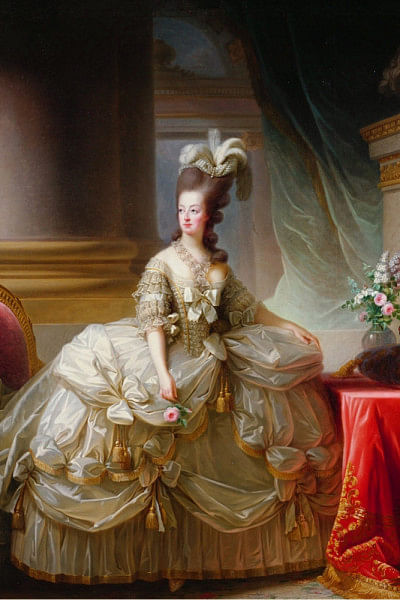The curious case of Marie Antoinette

In one of the intense countercultural debates of the late 1960s, Gore Vidal and William F. Buckley, two of American's wittiest and charming intellectuals, raged on their debate about the future of America. In the midst of the debate, Vidal, who represented the liberal Democratic agenda, called his foe "the Marie Antoinette of the right-wing," delivering a verbal uppercut to get the better of his bitter rival.
Whoever won that debate is in the opinion of the pundits and the political scientists. However, who is Marie Antoinette? This (in) famous French empress has left her imprint on modern day fashion, culture, and the arts. According to Vidal, just like Buckley, she was rich and pampered herself with excesses of wealth and grandeur.
Marie Antoinette was the wife of Louis XVI, whom she married at the young, tender age of 14, in the year 1770. She had captivated the audiences of France with her fashion sense and looks. On top of that, being an Austrian, she certainly raised eyebrows being a foreign princess.
Rumours of her stormy, and at times, overly exaggerated relationship with the king, the royal family, and most importantly, the French public put aside, she was a trendsetter in the world of 18th century fashion.
Marie Antoinette had spent her entire life stirring up controversy and making political statements through her clothing choices. Her incessant passion for clothing, decorations and interior designs, together with a seemingly limitless budget, much to the chagrin of members of the royal family and public, allowed her to create the masterpieces that inspire many to the modern day, and leave an important legacy of fashion attributed to her.
This is nowhere more evident than when she, a foreigner, had first landed on French soil for her wedding and had been instantaneously pulled into the world of French fashion. She was compelled to wear down an enormous white and silver dress, adorned with wide pannier hips, and garnished with clumps of white diamonds, gifted by her mother to show off her prestige. She had worn a dress that was fit too small for her, yet still managed to pull it off.
Panniers, which could be described as hip pads in today's lexicon, added a significant amount of horizontal width to Marie Antoinette's silhouette from the waist down. She favoured white and pastel coloured gowns, which created a new trend abuzz amongst the ruling women of the elite.

Her little white dress, composed of muslin, which was her invention, was later adopted by the women of the revolutionary uprising, who ironically, called for the monarchy to be overthrown, resulting in a gory end for the entire French royal family. The dress presented simplicity and casualness, which some members of the extended royalty felt did not befit a queen's stature and image.
She would dress up in her husband's clothes in the initial years of the marriage, to take part in horse riding. A sports which was seen as "masculine" in her time.
She, and her array of followers in the city of Versailles loved and adorned hairstyles, which were curled, heavily powdered with flour, and then made to stand with a stylish and expensive wig, symbolling status and panache. These were called "poufs."
Marie Antoinette would have her large extravagant hairdos decorated with colourful and beguiling flowers, feathers, lace, pearls, rubies, and even diamonds. Having flowers in the hair was considered stylish and striking, something that, till date, is well replicated.
The French queen also had a keen interest in the interiors of the palace. She went as far as to have a toy farm being built, coupled with exquisite floral decorations in garden and inside the palace itself.
She had wooden panelling vividly incorporated throughout the walls, which were further decorated with "boiserie" work, which was wooden carvings in the form of flowers and beautifully crafted leaves. She brought in the best carpenters and designers from Europe and France itself.
All these expressions of independence and grandeur backfired when "Madame Deficit" — the name given to her by the public — became famous for her extravagant expenditures, for powdering her hair with flour during a famine, and for dressing herself in the colours of her family of origin, the German Habsburgs.
From her powdered, sky-high hairdos, to her divine selection of the fanciest dresses, Marie Antoinette was a trendsetter in an overwhelming hostile and angry world.
From her gender bending androgynous redingotes ("riding coats") to her architectural masterpieces of "poufs" that hyped towering ladies' hairstyles in commemorative shapes ranging from naval ships to gigantic birds in flight, have lived till this day, and are often evoked and created during festive and cultural ceremonies in Europe.
From pop culture to historical significance to lexicon, this ill-fated queen's name has been evoked for both positive and negative reasons.

 For all latest news, follow The Daily Star's Google News channel.
For all latest news, follow The Daily Star's Google News channel. 



Comments